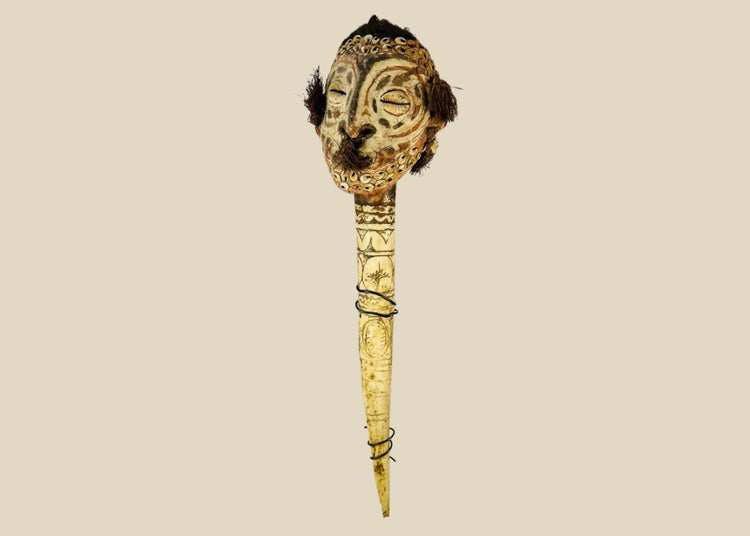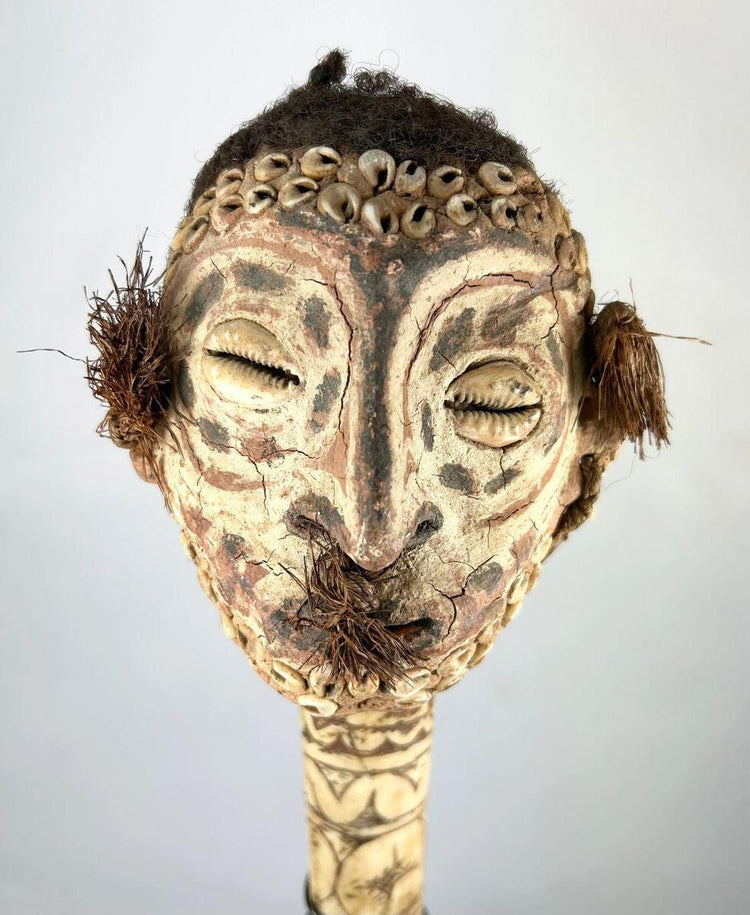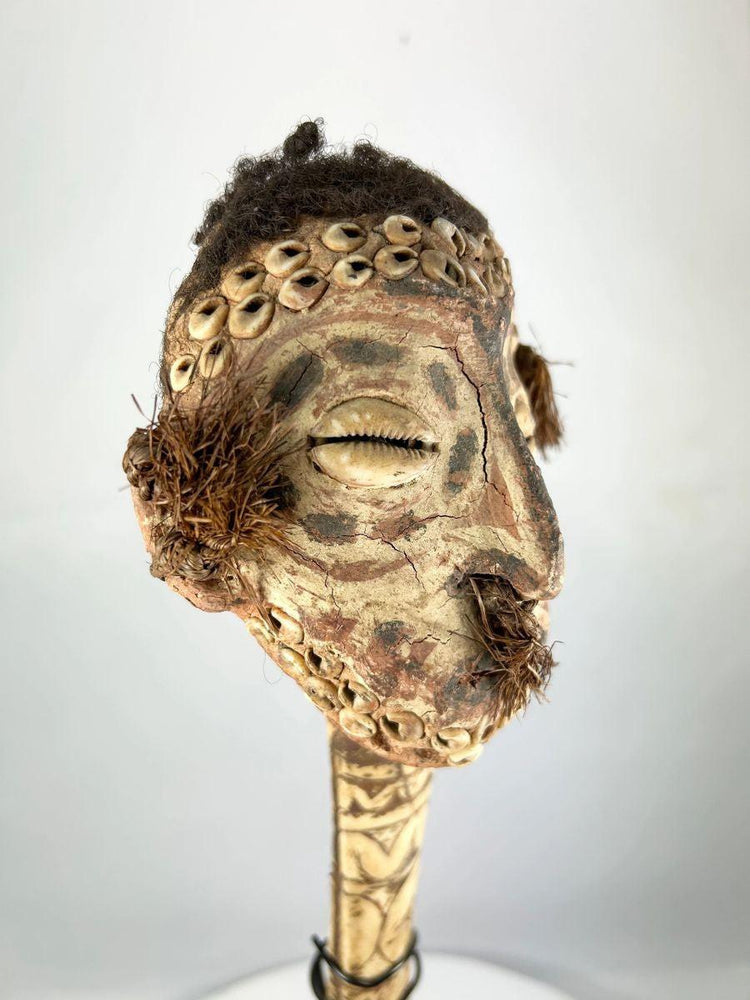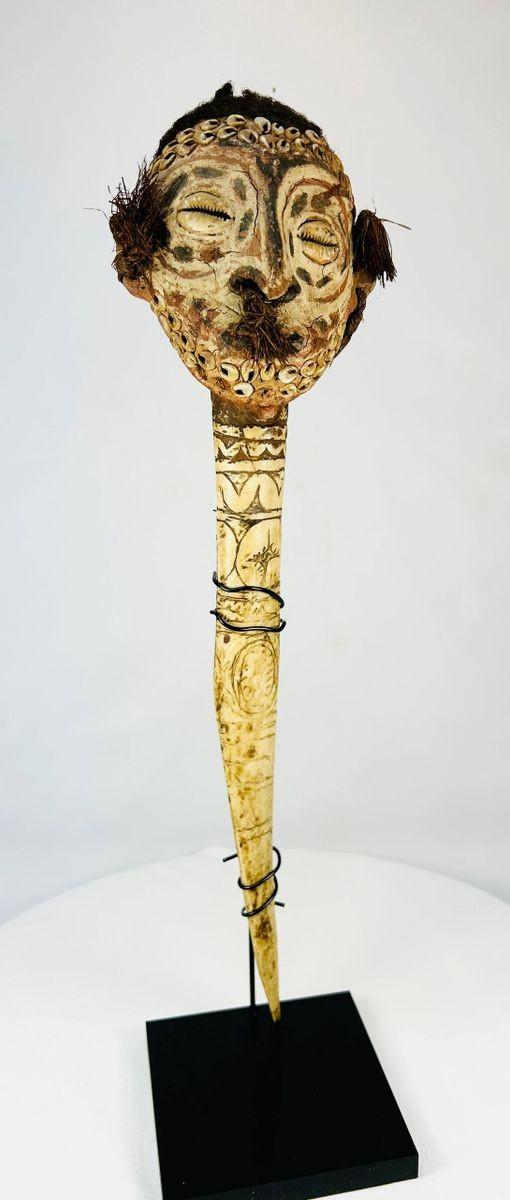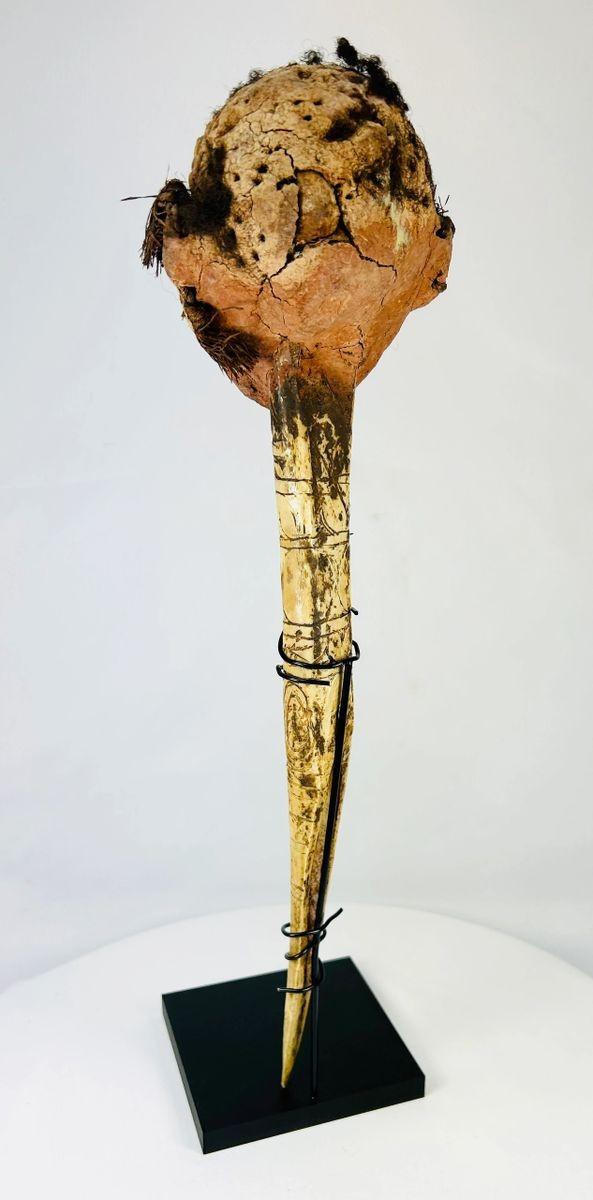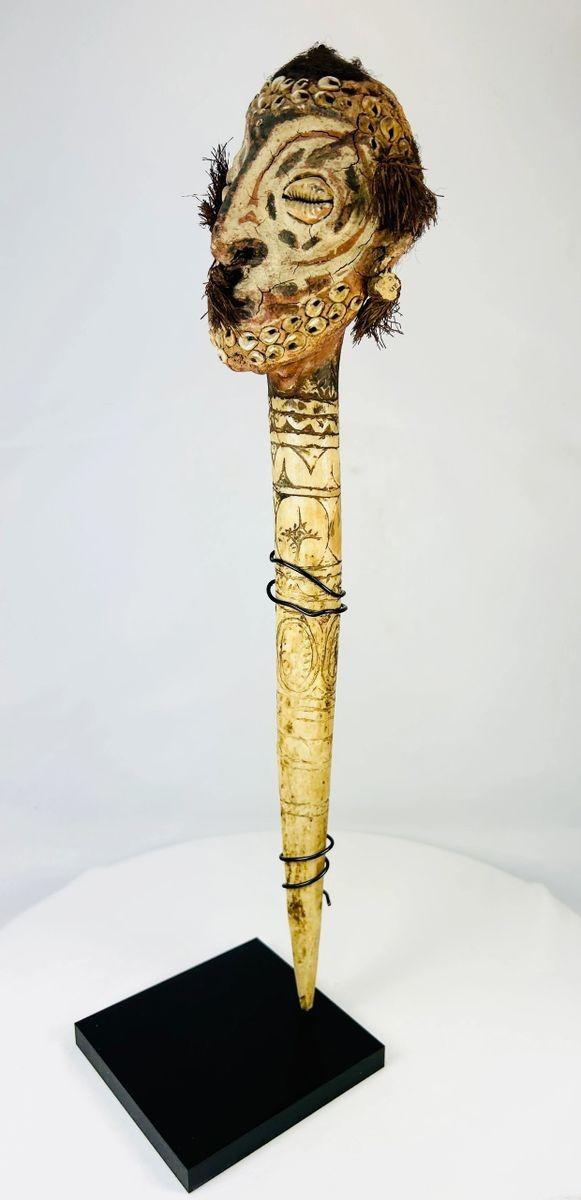Artefacto tribal de daga ceremonial de hueso de Papúa Nueva Guinea con concha de cauri y pelo
Descripción
Más
Menos
Contexto histórico y origen
Región: Río Sepik, Papúa Nueva Guinea
Material: Hueso con incrustaciones de concha de cauri, cabello humano y decoración tallada.
Periodo: siglo XIX d.C.
Descripción
Esta rara daga ceremonial, procedente de la región del río Sepik en Papúa Nueva Guinea, encarna las profundas tradiciones espirituales y la maestría artística de su pueblo. Tallada a mano en hueso denso y adornada con conchas de cauri, cabello humano e intrincados motivos tribales, la daga no solo servía como arma, sino también como objeto sagrado utilizado en ceremonias y ritos de iniciación. Su cabeza antropomórfica tallada simboliza los espíritus ancestrales, conectando al portador con el linaje, la protección y la identidad tribal.
Características
- Cabeza antropomorfa tallada que representa espíritus o deidades ancestrales.
- Incrustaciones de concha de cauri que simbolizan fertilidad, riqueza y conexión espiritual.
- Adorno de cabello humano, que significa linaje y poder protector.
- Motivos tribales geométricos tallados a mano, que reflejan la iconografía ritualista.
- Construcción de hueso denso con pátina superficial envejecida que confirma la autenticidad.
Importancia cultural
Entre las tribus del río Sepik, las dagas ceremoniales estaban imbuidas de energía espiritual y presencia ancestral. Se utilizaban en ritos de iniciación, rituales tribales y, en ocasiones, en combate, sirviendo como puente entre el mundo físico y el espiritual. Los detalles de cabello humano y las imágenes ancestrales talladas hacían que estos objetos fueran excepcionales y poderosos, sirviendo como conexiones tangibles con el patrimonio y la cosmología tribal. Esta daga refleja tanto el papel sagrado de los artefactos rituales como la maestría de la artesanía sepik, considerada una de las más veneradas de Oceanía.
Condición
La daga se encuentra bien conservada, con pátina natural y ligeros signos de desgaste propios de su antigüedad y uso ceremonial. Los detalles tallados, las incrustaciones de concha de cauri y el adorno para el cabello se mantienen intactos, lo que confirma su rareza e importancia cultural.
Dimensiones (aproximadas)
Longitud: 14 pulgadas
Edad
siglo XIX d.C.
Descripción
Contexto histórico y origen
Región: Río Sepik, Papúa Nueva Guinea
Material: Hueso con incrustaciones de concha de cauri, cabello humano y decoración tallada.
Periodo: siglo XIX d.C.
Descripción
Esta rara daga ceremonial, procedente de la región del río Sepik en Papúa Nueva Guinea, encarna las profundas tradiciones espirituales y la maestría artística de su pueblo. Tallada a mano en hueso denso y adornada con conchas de cauri, cabello humano e intrincados motivos tribales, la daga no solo servía como arma, sino también como objeto sagrado utilizado en ceremonias y ritos de iniciación. Su cabeza antropomórfica tallada simboliza los espíritus ancestrales, conectando al portador con el linaje, la protección y la identidad tribal.
Características
- Cabeza antropomorfa tallada que representa espíritus o deidades ancestrales.
- Incrustaciones de concha de cauri que simbolizan fertilidad, riqueza y conexión espiritual.
- Adorno de cabello humano, que significa linaje y poder protector.
- Motivos tribales geométricos tallados a mano, que reflejan la iconografía ritualista.
- Construcción de hueso denso con pátina superficial envejecida que confirma la autenticidad.
Importancia cultural
Entre las tribus del río Sepik, las dagas ceremoniales estaban imbuidas de energía espiritual y presencia ancestral. Se utilizaban en ritos de iniciación, rituales tribales y, en ocasiones, en combate, sirviendo como puente entre el mundo físico y el espiritual. Los detalles de cabello humano y las imágenes ancestrales talladas hacían que estos objetos fueran excepcionales y poderosos, sirviendo como conexiones tangibles con el patrimonio y la cosmología tribal. Esta daga refleja tanto el papel sagrado de los artefactos rituales como la maestría de la artesanía sepik, considerada una de las más veneradas de Oceanía.
Condición
La daga se encuentra bien conservada, con pátina natural y ligeros signos de desgaste propios de su antigüedad y uso ceremonial. Los detalles tallados, las incrustaciones de concha de cauri y el adorno para el cabello se mantienen intactos, lo que confirma su rareza e importancia cultural.
Dimensiones (aproximadas)
Longitud: 14 pulgadas
Edad
siglo XIX d.C.
También te puede interesar
























